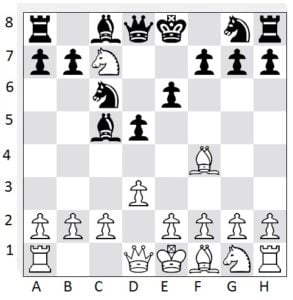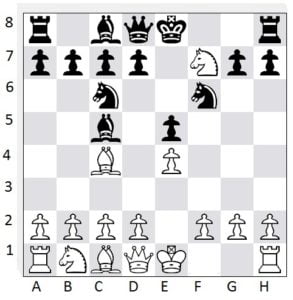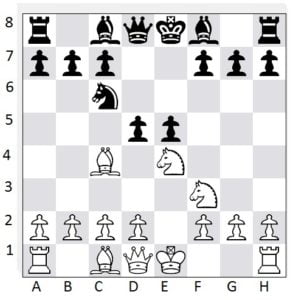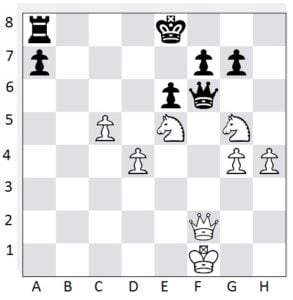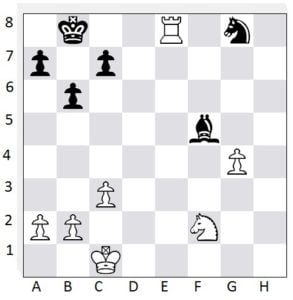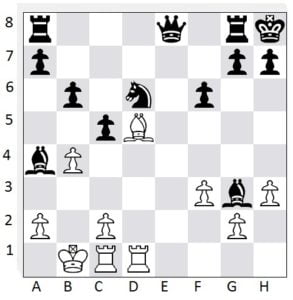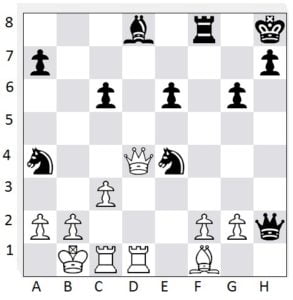“The Fork”, believe it or not, does NOT have anything to do with the widely used eating utensil! The fork, in chess, refers to when a piece is in a position that it threatens two pieces simultaneously. This may also include putting your opponent in check while attacking another piece (this is a highly effective tool to add to your arsenal).
While the Knight is the most popular piece to fork with (since it threatens pieces that can be nowhere near one another at the time), every piece on the board is capable of forking 2 pieces, given the right situations. Let’s take a look at some popular examples of forking with each piece that you will likely see in your games.
Popular Knight Forks
The Knight is the easiest piece to fork with. Given it’s unusual moving pattern, it has the ability to threaten pieces that are nowhere near one another and aren’t even lined up in any way.
A highly popular use of the knight fork is to place the opponent in Check, while attacking a piece. In this case, Checking and threatening a Rook. Black will not take the Knight because he’d lose his Queen. Instead he’s forced to move the King out of Check, allowing white to take his Rook.
On the other side the board, you’ll also often see the Knight used to fork the Queen and a Rook, forcing the opponent to chose the lesser of two losses. You’ll notice the Knight is also threatening the e-pawn (though the e-pawn is defended). Just imagine how much forking-power the Knight has given it’s “L-shape” pattern. if there were a piece on g5, it’d be threatened right now as well.
Popular Pawn Forks
The Pawn may be the least powerful piece on the board, but by moving straight and attacking diagonally, it can create some pretty powerful forks such as the one seen in the diagram below (that I’ve seen FAR too many “chess noobs” fall for):
Black is now going to win a bishop or Knight, making him up a pawn (losing a Knight for taking a pawn and either Knight or Bishop).
To see if you’ll be able to do a pawn fork (or might fall victim of one), look for pieces that are on the same rank as one another with only one space between them (as the Bishop and Knight are in the above example).
Sometimes, the Pawn fork won’t always be so easy to see as it might need a little setup. For instance, consider the next diagram:
Remember, to find a possible pawn fork, look for two pieces on the same rank with only one space between them. See those two knights white has on the 5th rank? It’s black’s move. What black WANTS to do is push his f-pawn to fork the two Knights. His Queen is in the way, however. Easily solved: just move the Queen. But most places you move the Queen will give white the chance to get out of the fork threat. So how can we still do it? Force white to move a different piece here. So, we’ll do 1. … Qxf2+ which forces White to do 2. Kxf2 which then allows us to do 2. … f6, forking the knights.
All the Rest
All the other pieces can also perform forks, but they are all much less frequent as the pieces must be in line with how the piece is able to move. So for a Rook, the forked pieces both have to be on horizontals or verticals with one another:
Diagonals for the Bishop:
Or for the Queen virtually anywhere she’s able to move to

